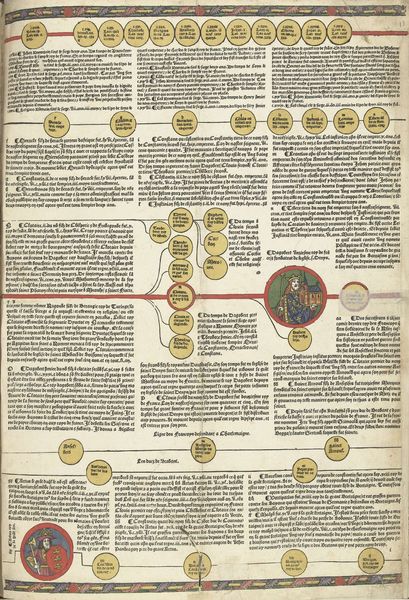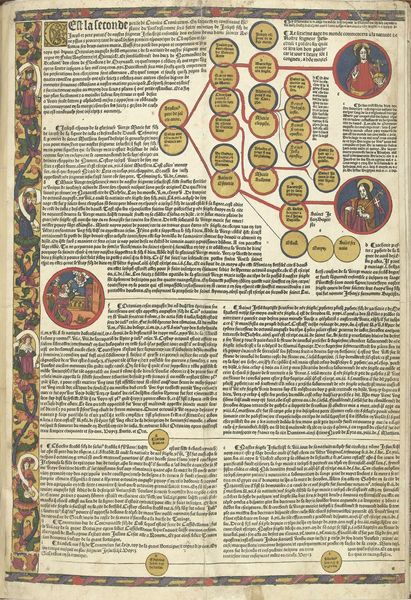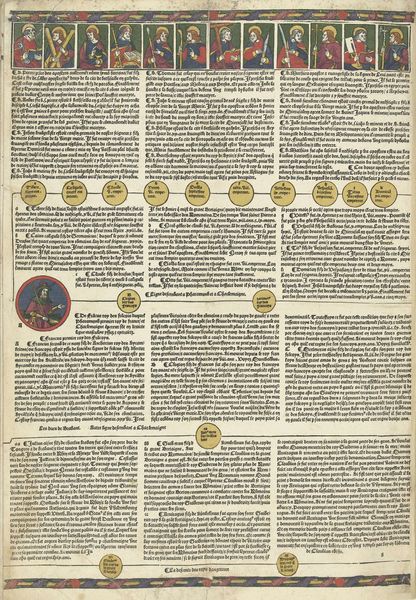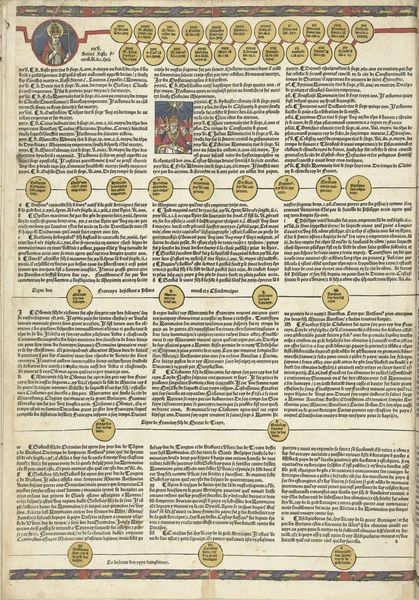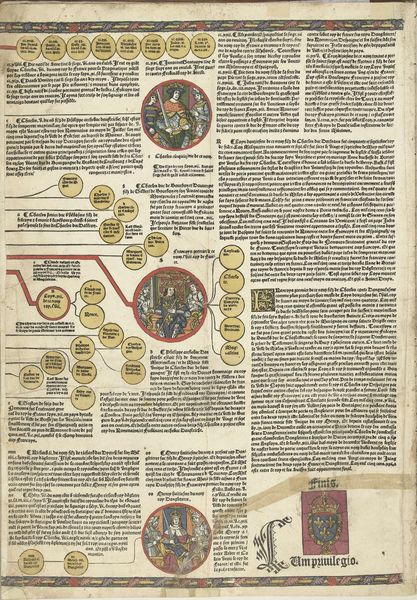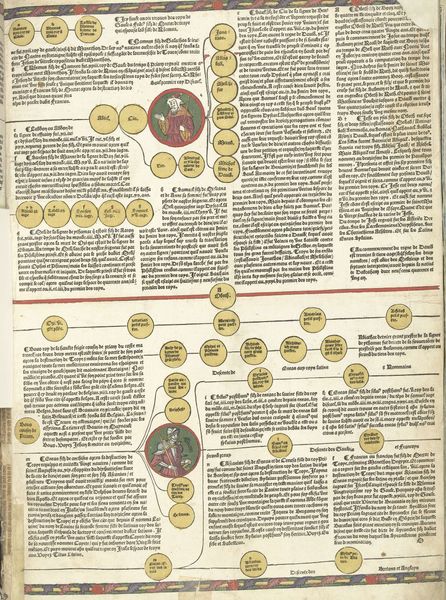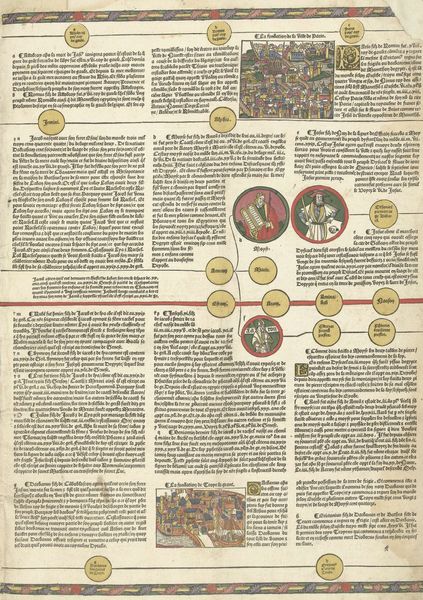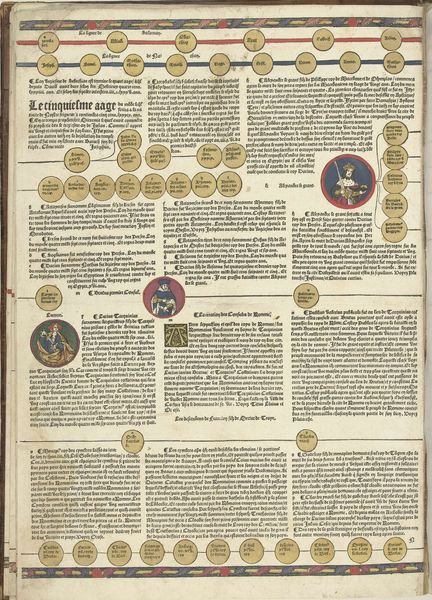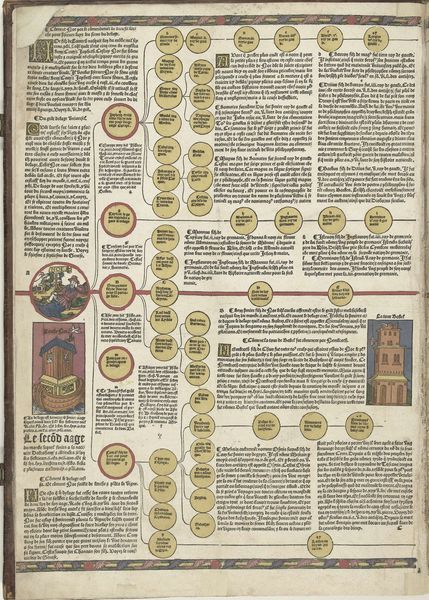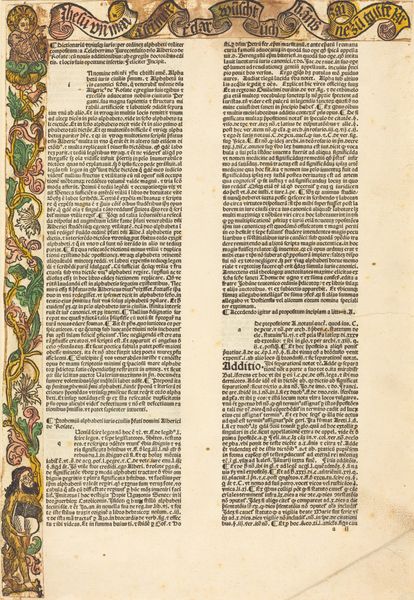
print, paper, woodcut
#
medieval
# print
#
paper
#
woodcut
#
history-painting
#
early-renaissance
Dimensions: height 550 mm, width 380 mm
Copyright: Rijks Museum: Open Domain
Editor: This is "Cronica Cronicarum (...), blad 13 verso," possibly created between 1521 and 1529 by an anonymous artist. It's a woodcut print on paper, and it feels more like an infographic than a traditional painting. It has these circular elements linked by red lines, breaking up blocks of dense text. What strikes you about this piece? Curator: Immediately, I observe the tension between the graphic structure and the textual content. Note the formal relationship of circular forms connected by precise, ruled lines creating visual pathways, segmenting time as well as creating relational lineages. How do these visual devices impact the reading experience? Editor: Well, it helps me navigate what looks like a very dense history! The lines and circles create a clear hierarchy, which makes the text less daunting. I am assuming it denotes some kind of succession... Curator: Precisely. We might consider these visual elements as signifiers of power, where graphic precision embodies rational and chronological control. Observe the color choices: red for connections, yellow highlighting significant nodes. What meaning do you draw from such restrained chromatic intervention? Editor: I suppose, as a framework it provides hierarchy. In comparison, it could appear very different were these links between leaders designed more organically with curvilinear line or, a flamboyant use of heraldic color to show their relation! Curator: Precisely! Consider also how the anonymous nature of the work amplifies its function as a visual compendium of data and knowledge, as a kind of objective device. The absence of individual artistic intervention supports this formal approach. Editor: I see. It is interesting to see how stripping away flourishes can highlight the intended functionality of early-renaissance imagery. Curator: Indeed, it refocuses our appreciation on how knowledge was structured and disseminated in the early Renaissance. Every deliberate choice within this medium served a purpose. Editor: Thank you; I learned so much looking at this historical timeline from your perspective!
Comments
No comments
Be the first to comment and join the conversation on the ultimate creative platform.
